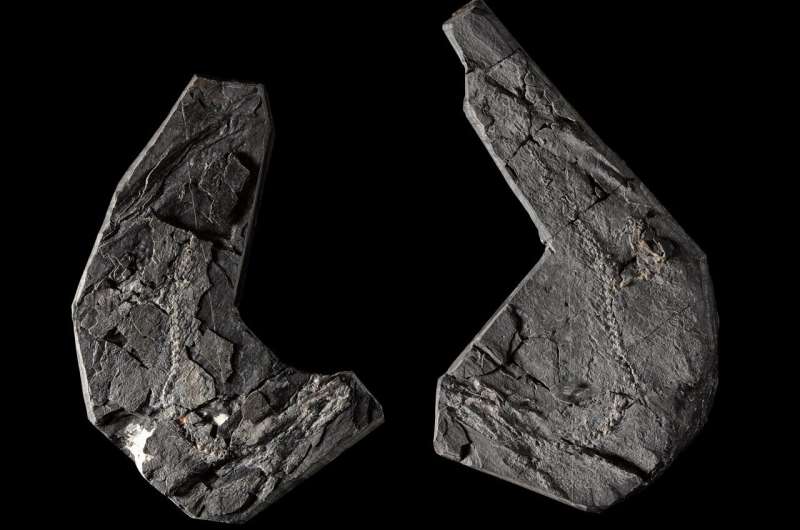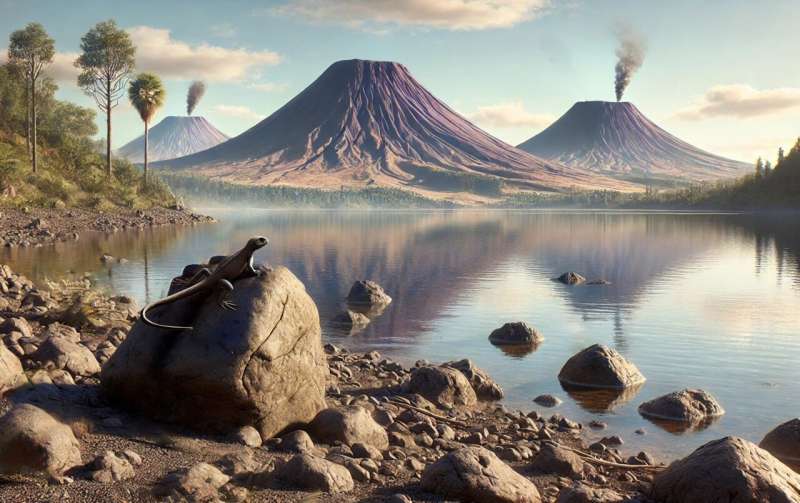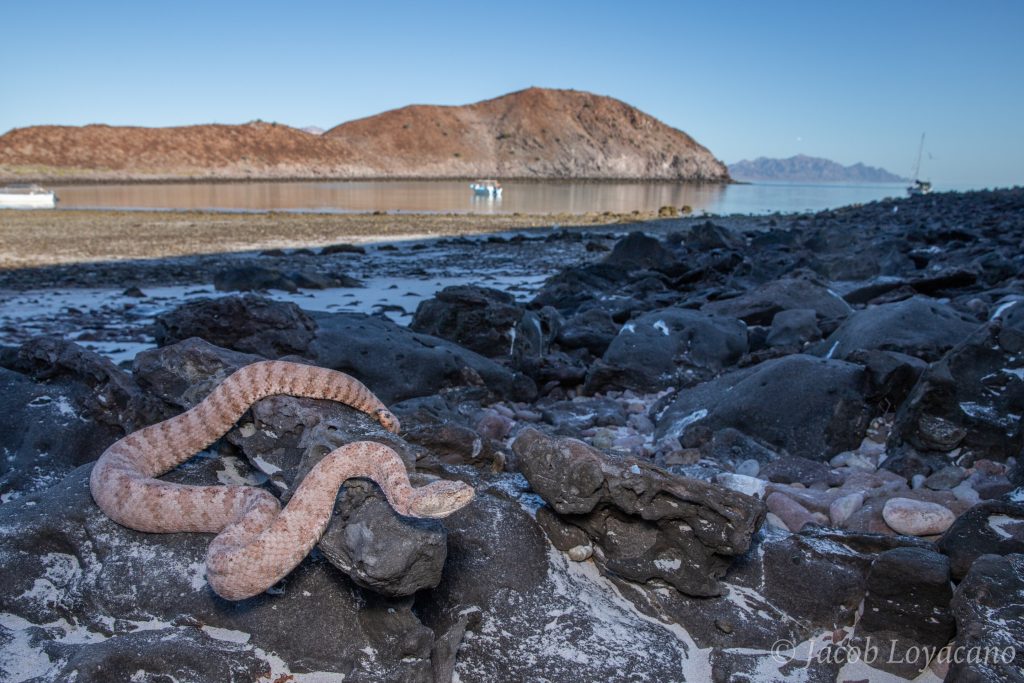
Picture a small, ancient creature, the size of your hand, living in a lush, humid world millions of years ago. This little fellow, known as Westlothiana lizziae, represents a monumental leap in evolution. Recent research has just deepened our understanding of this remarkable fossil and what it tells us about our own origins as land-dwelling creatures.
Discovered by an amateur paleontologist in Scotland back in 1984, the almost complete fossil of Westlothiana lizziae presented a unique opportunity to study the transition from life in water to life on land. It’s like uncovering a hidden chapter in the great story of evolution—this tiny being is one of our ancient ancestors. It not only connects us to amphibians, birds, reptiles, and mammals but also helps unravel the mysteries of the evolutionary journey that led to all land animals, including us!
For years, however, scientists struggled to determine the exact age of this precious find, with many estimating it to be around 331 million years old. But thanks to some innovative research from The University of Texas at Austin, we now believe that Westlothiana lizziae, along with other similar fossils from the same site, is actually about 14 million years older—dating back a surprising 346 million years!
This new discovery is particularly intriguing because it places these ancient fossils right in the midst of a fossil drought known as Romer’s Gap. This period, spanning roughly 360 to 345 million years ago, is a perplexing time in evolutionary history, where scientists have found very few fossils. If you think of it as a puzzling gap in the story of life’s evolution from water to land, Westlothiana lizziae becomes a key piece that helps us fill in some of the blanks.
At the forefront of this research was Hector Garza, a recent doctoral graduate from the Department of Earth and Planetary Sciences at UT’s Jackson School of Geosciences. Garza took on the challenge of dating this ancient fossil using a method called radiometric dating. Imagine the courage it took to pursue this, especially since the conditions at the fossil site near ancient volcanoes made it daunting. Many colleagues warned him that finding suitable zircon crystals in the hardened basalt rock might be a long shot.
But fate smiled upon Garza. In a stroke of luck, mud and debris cascading from the volcanos created a layer of sediment that preserved zircons in a lake nearby—essentially trapping these early tetrapod creatures in time. By extracting zircon crystals from six rock samples surrounding the fossils and using uranium-lead laser dating techniques at the University of Houston, Garza was able to uncover an older age for these vital fossils.

Previously, researchers had only estimated the age of these fossils based on younger fossil finds worldwide. But this new age of 346 million years old is critical in understanding the timeline of the emergence of vertebrates on land. Julia Clarke, a co-author and professor at the Jackson School, emphasizes the significance of this research, stating that pinpointing the age of the East Kirkton fossils is essential to understanding why this monumental shift from water to land occurred when it did.
Located in the East Kirkton Quarry, this site is a veritable treasure chest of early tetrapod fossils. More than just the Westlothiana lizziae, seven stem tetrapod fossils have been unearthed here, each revealing clues about an ancient world bursting with vibrant life. Imagine a tropical forest with active volcanoes, teeming with a variety of plants and animals; it was a world unlike any we know today.
Thanks to the cooperation of institutions like the National Museum of Scotland, Garza was able to study rock samples essential for his research. The team included experts and professors who all contributed to unlocking these secrets from our planet’s distant past. With every new finding, we inch closer to understanding our own place in the grand tapestry of life.
For further reading:
Hector K. Garza et al, “New U-Pb constraints and geochemistry of the East Kirkton Quarry, Scotland: Implications for early tetrapod evolution in the Carboniferous,” PLOS ONE (2025). DOI: 10.1371/journal.pone.0321714
If you would like to see similar science posts like this, click here & share this article with your friends!



